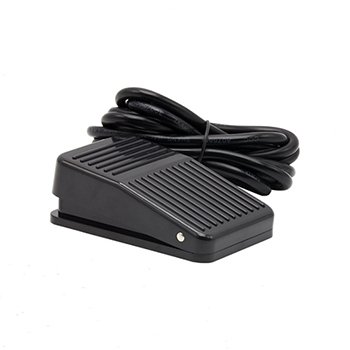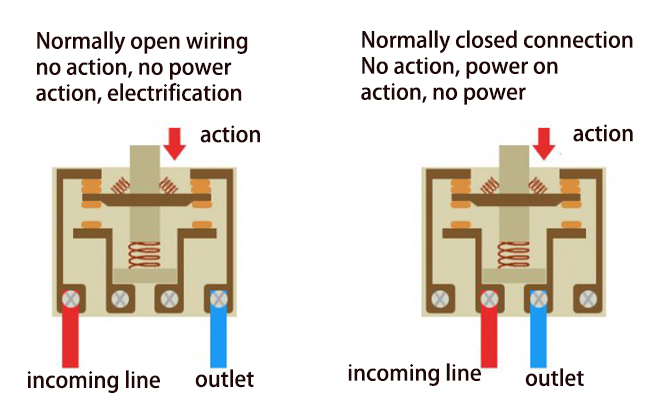How to Wire the Foot Switch?
The foot switch belongs to a type of switch, mainly through the action of the foot to operate whether the circuit is on or not, and can also control the magnitude of the current. In many areas, if it is inconvenient to use the hand, a foot switch will be set to operate the machine, saving time and effort, so the foot switch is used frequently in daily life, mainly used in medical equipment, stamping equipment, and other work fields. So, do you know how to wire the foot switch? Let's learn about the wiring of the foot switch now.
Types of foot switch
A foot switch is a switch that controls the on-off of a circuit by stepping or stepping on it. It is used in a control circuit that cannot be touched by both hands to replace both hands to achieve the purpose of the operation. A simple foot switch is actually a built-in travel switch. When the pedal gives a signal, the switch is executed. In the field of welding, the foot switch also plays a role in controlling the output current.
This type of foot switch can also be divided into two categories:
- Mechanical foot switch
- Inductive foot switch
The mechanical foot switch is a traditional rack and pinion drive and the inductive type works by using principles such as electromagnetic induction.
Process of foot switch wiring
The foot switch performs the operation of circuit conduction through the action of stepping on or stepping on. In a 220V power circuit, to operate a three-phase motor, a DC contactor must be used, and the on and off terminals of the foot switch are connected in series in the DC contactor electromagnetic coil control circuit. The casing, pedal, and protective cover of the foot switch are all made of cast iron, which has the characteristics of high toughness and can be adjusted according to customer needs.
Take the control of 220V two-phase household appliances as an example. If the rated voltage of the household appliance is less than the rated voltage of the foot switch contact point, the foot switch can be connected in series with the 220V two-phase household appliance control circuit immediately. However, if the rated voltage of the household appliance is greater than the rated voltage of the foot switch contact point, a DC contactor must be used. From the perspective of electrical safety, the rated current of the electromagnetic coil of the DC contactor should be below 36V, and a control transformer needs to be installed in the control circuit.
The foot switch has three wires, one control wire is open and closed, one control wire is normally closed, and the other is a common wire for on, off, and normally closed, and only one control wire is used for on and off. When connecting, you only need to connect the normal line and the common line, one is connected to the neutral line of the switching power supply, and the other is connected to the live line and neutral line of the switching power supply. Use a digital multimeter to measure the on-off gear, connect the two meters to any two wires, press and hold the foot switch to make it pass, and relax it to block it. The on and off terminals of the foot switch are connected in series in the electromagnetic coil control circuit of the DC contactor.
Foot switch application
The surface of some foot switches is generally changed by electrostatic spraying, which has very good wear resistance, impact resistance, and heat resistance. Even at all temperatures below 180°, the foot switch can work well.
The foot switch is suitable for a 50 Hz or 5-ampere control circuit, which can convert the data signal of mechanical equipment into electrical equipment signal. It is used to control various molecular thermal movements such as pressure machinery, transportation machinery, automation equipment, test equipment, medical equipment, and various production lines, etc.
Precautions for foot switch
- Depending on the nature of the load and the current value, please pay attention to the rated load of the product.
- Please pay attention to the short circuit and open circuit of the internal wiring when handling and moving.
- Please pay attention to the protection level of the product when using it in a place with a lot of water, oil, dust, etc.
- Heavy pressure and impact are the direct cause of product damage, please be careful when using it.
Foot switch troubleshooting
Fault 1: The automatic airtight door cannot be opened.
Maintenance solution: Check the circuit first to see if the motor and foot sensor switch are connected to the power supply. If so, you need to confirm whether there is any problem with the controller and switch. If there is no problem, it is recommended to contact the maintenance master for inspection.
Fault 2: The automatic airtight door opens after being powered on, and automatically closes when the foot is pressed, causing confusion in the control.
Maintenance solution: In this case, the automatic airtight door controller should be adjusted in the opposite direction.
Fault 3: The foot switch of the automatic airtight door is faulty.
Maintenance solution: first check whether it is due to line problems, such as line problems, just reconnecting. Then check whether the foot switch is damaged and replace it for maintenance.

